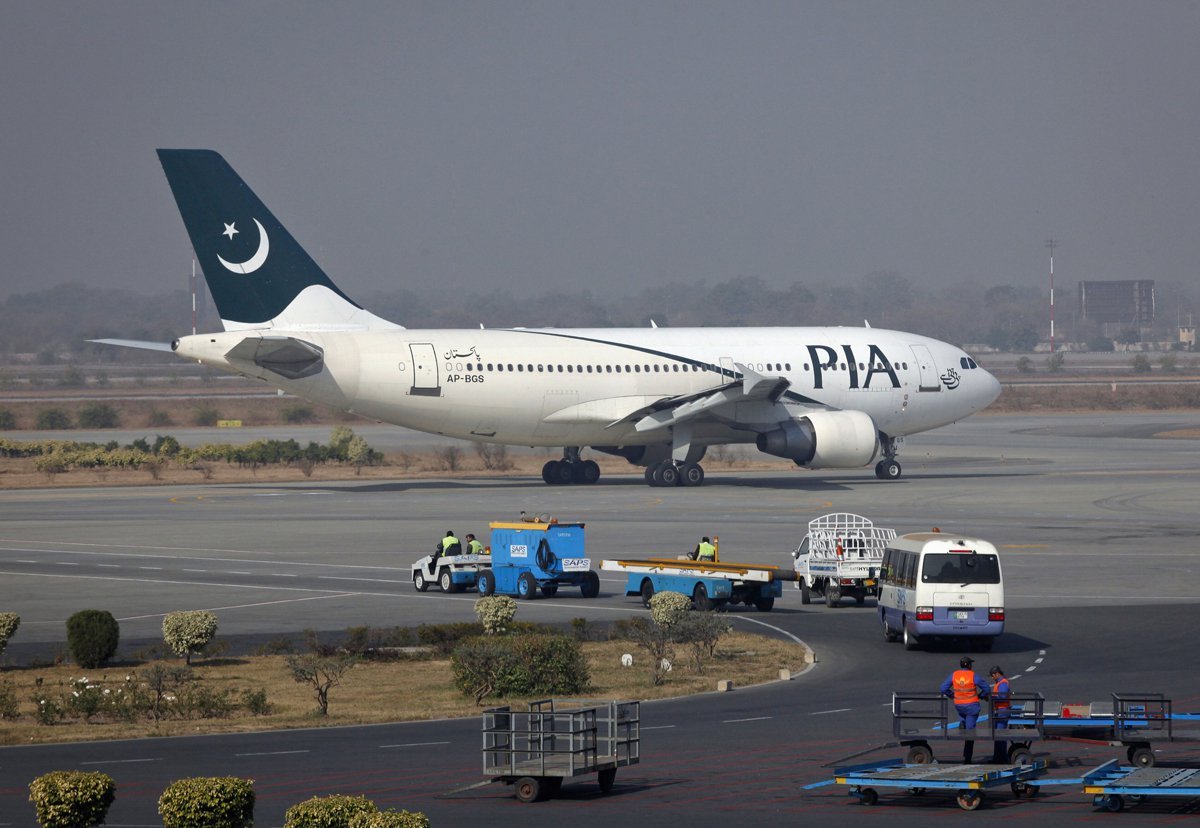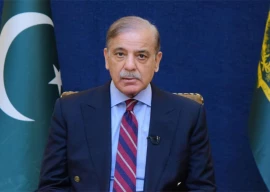
The government’s desperate disposition to offer yet another amnesty scheme is highly unlikely to do the trick as it will further exacerbate franticly spreading money laundering practices.
Amnesty without accountability, previous experiences reveal, has always ended up in economic debacles and is continuously validated by close examination of all clemency schemes from Ayub Khan’s time to the present day.
The solution just lies in removing decade-old distortions from the plaguing system that provides solace only to the corrupt affluent of the society.
PIA has flown into oblivion, but its new CEO wants to steer it back
The failure in privatising non-performing state sector entities is causing Rs500 billion annual haemorrhaging to the national kitty. Another Rs500-600 billion loss is incurred due to corruption and gross financial irregularities in the federal and provincial taxation departments.
Overall unchecked corruption and lukewarm attitude of the rulers is depriving the country of billions annually and the shrinking financial resources are widening the already huge Rs1.5 trillion gap between income and expenditure annually.
The failure in getting new resource mobilisation through better taxation has made the country subservient to external assistance. The issue got compounded when both the trade deficit and budget deficit started widening disproportionately requiring close to 50% foreign aid and expensive loans to fund every budget.
When it comes to Public Sector Corporations (PSCs) PPP’s Asif Ali Zardari and PML-N’s Nawaz Sharif are often accused of destroying these nascent entities by promoting financial indiscipline, inducting excessive manpower and placing incompetent people on top positions.
Of all the malfunctioning state sector enterprises, Pakistan International Airlines (PIA), Pakistan Steel Mills (PSM) and Pakistan Railways have turned out to be the major loss making units, eating bulk of the budget every year, with government of the day hardly taking any remedial measures due to its vested political and financial interests.
Once among the top airlines of the world, PIA continues to incur huge losses forcing every government to make available billions of rupees annually to help keep the organisation afloat. It is depressing to see the PIA management uninterruptedly extending its lucrative routes to other foreign airlines. In a latest case one private Saudi airline has been granted flight rights to operate on profitable inland routes for Umra and Hajj.
Who has deprived PIA of this huge revenue? Is it the connivance of PIA, Civil Aviation Authority and concerned bureaucrats? Has it been approved by Prime Minister Shahid Khaqan Abbasi who is also running his private airline in the country? Is it not frustrating that nobody is held responsible for the annihilation of the national airline?
Besides PIA, PSM is a classic case study that provides sufficient understanding of how a mighty organisation can be brought to its knees. It is a case which demands that heads must be rolled and responsibility squarely fixed on present and previous rulers along with the chairmen of the ill-fated entity.
PSM accumulated a profit of Rs10 billion in 2007-08 and in a dramatic turn of fate its losses and payable debt have reached Rs450 billion in November 2017. Is it not mind-boggling incompetency? This is a $3.5-billion additional burden and had the PSM been privatised, it would have been perhaps good for both the government and the organisation.
Why did the present government avoid implementing the draft recommendations of the mill’s financial advisor for spending $900 million to have the production capacity increase from 1.1 million to 3 million tons?
The mills incurred a loss of Rs26 billion in 2008-09 after its production went down from 82% to 64%. The main reason was the purchase of raw material on exorbitant prices and subsequently, it was revealed that it all happened under the influence of the import mafia.
On the intervention of the Supreme Court, the National Accountability Bureau (NAB) filed a reference of Rs180 billion against the culprits but what has happened to the case is anybody’s guess. All blame was placed on the controlling ministry – the ministry of industries and production, as it failed to monitor the growing financial indiscipline in the mills about which the auditor general of Pakistan had also raised a number of objections.
The irony is that no government realised the gravity of the problem and kept playing with the organisation. There are 12 huge complexes of the PSM besides its 19,000 acres of prime land. How has the Sindh government given 2,000 acres of mills’ land to the National Highway Authority? This involved mutation of the land and PSM has asked the government to return its land acquired without completing legal requirements.
Way back in 2002, former chief justice Iftikhar Chaudhry took suo moto notice of the privatisation of the steel mills which were sold to a foreign group at a price of $325 million. But the Supreme Court cancelled the deal and since then no effort has been made by any government to revive or disinvest the mills. No decision was taken as to whether the mill should be sold to the Sindh government as was proposed by the Centre.
The Privatisation Commission kept planning to privatise the steel mill and in January last year it sought significant tax breaks and curbs on steel imports aimed at leasing out the unit. The objective was to help attract business for investors.
What happened to the incentive package that was made part of the transaction structure to lease out the mills for 30 years to the private sector? Why did no private firm or a group come forward to acquire the mills on lease? There is no buyer for the unit which is bleeding Rs3 million an hour.
PIA business plan banks on bailout
Now that there is no privatisation environment to sell PSM, why is there no out of the box thinking to revive it by the government? The mill unfortunately could not be completed even after 45 years whose inauguration was done in September 30, 1973 by former prime minister Zulfikar Ali Bhutto. Each successive government is to blame for destroying the biggest industrial complex in Pakistan, which could have been the back bone for the country’s engineering industry.
“None of the members of the Board of Directors of the PSM has any expertise to help run the mill and save its billions of rupees worth of losses,” said an insider.
So is the situation in every state sector unit which is neither allowed to be privatised or revived. The current poor economic conditions cannot sustain for a long period of time and the bleeding of the state sector is further making the situation difficult. How long will this continue?
The writer is the recipient of four national APNS award
Published in The Express Tribune, January 15th, 2018.
Like Business on Facebook, follow @TribuneBiz on Twitter to stay informed and join in the conversation.























COMMENTS
Comments are moderated and generally will be posted if they are on-topic and not abusive.
For more information, please see our Comments FAQ